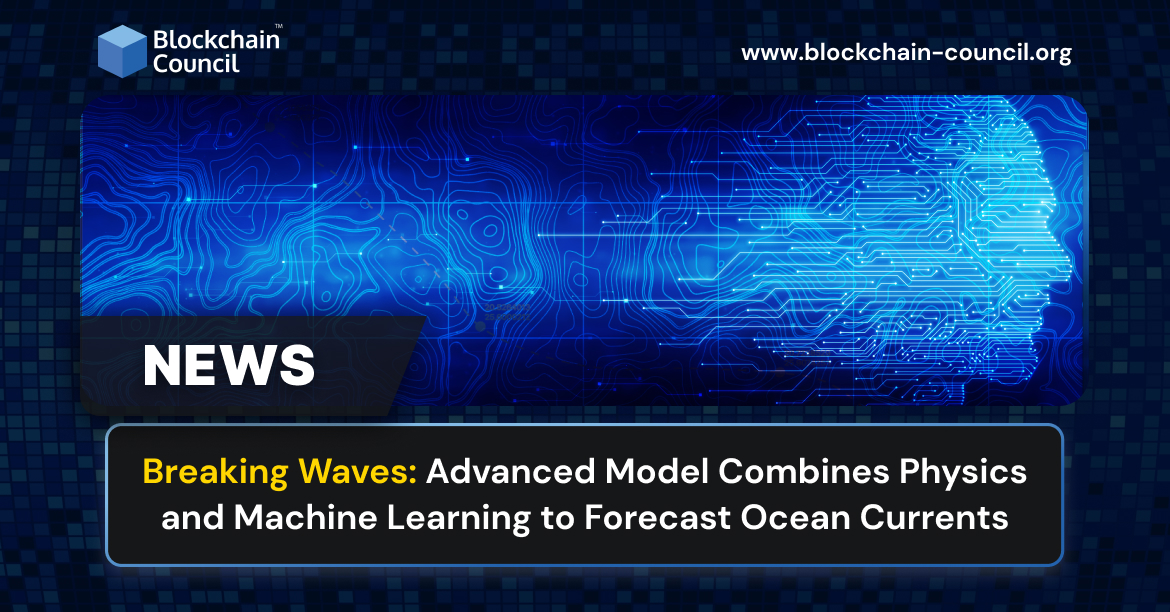
- Blockchain Council
- May 19, 2023
A groundbreaking study conducted by a team of multidisciplinary researchers, including computer scientists from MIT and oceanographers, has developed a novel model that combines physics and machine learning to revolutionize the prediction of ocean currents and the identification of divergences. The new model outperforms conventional methods by addressing the unrealistic assumptions made about water behavior in the existing statistical models used on buoy data.
Ocean currents play a crucial role in various domains, including weather forecasting, oil spill response, and understanding energy transfer within the ocean. Accurate predictions of currents and precise identification of divergences are essential for these applications. To date, scientists have employed a machine-learning technique called the Gaussian process to estimate currents and locate divergences, even when the available data is limited. However, the standard Gaussian process assumes that the latitude and longitude components of a current are unrelated, which contradicts the physical reality of ocean dynamics.
The team of researchers recognized the limitations of the current approach and sought to develop a more robust model that incorporates the principles of fluid dynamics. By doing so, they aimed to create a model that better represents the complex physics underlying ocean currents.
The novel model utilizes a Helmholtz decomposition, a technique commonly used in fluid dynamics, to accurately represent the vorticity (whirling motion) and divergence (water rising or sinking) components of an ocean current. Unlike the previous model, which assumed a correlation between vorticity and divergence on the same scales, the new model incorporates a more realistic representation of their relationship. This approach enhances the model’s accuracy and ability to generate precise predictions.
The researchers evaluated the performance of the new model using both synthetic and real buoy data from the Gulf of Mexico. In comparison to the standard Gaussian process and another machine-learning method employing a neural network, the new model consistently demonstrated superior performance in predicting currents and identifying divergences. For instance, in a simulation involving an adjacent vortex and ocean current, the new model correctly predicted no divergence, while the conventional Gaussian process and neural network methods both predicted a divergence with high confidence.
Also read: Google’s Machine Learning-Powered Dashboard Protects APIs from Sneaky Attacks
Moreover, the new model proved effective in identifying vortices using a small set of buoys, providing additional insights into ocean dynamics with minimal data.
The implications of this research are vast. By accurately predicting currents and pinpointing divergences, scientists can more precisely forecast weather patterns, approximate the spread of oil following a spill, and measure energy transfer within the ocean. Furthermore, the model has the potential to enhance the monitoring of biomass transportation, carbon dispersion, plastics distribution, oil movement, and nutrient flow in the ocean. This information is crucial for understanding and tracking climate change, as well as managing and mitigating environmental impacts.
The innovative approach developed by the research team has garnered praise from field specialists, who appreciate its integration of well-established fluid dynamics principles into a flexible and precise model. Massimiliano Russo, an associate biostatistician at Brigham and Women’s Hospital, commended the study for its scientifically rigorous approach and its potential to enhance the adaptability and precision of existing modeling.
Looking ahead, the researchers aim to further refine their model by incorporating a temporal component to account for variations in ocean currents over time. They also plan to enhance the model’s ability to separate noise, such as wind effects, from the data, thereby improving its overall accuracy.
Funding for this study was provided by the Rosenstiel School of Marine, Atmospheric, and Earth Science at the University of Miami, the Office of Naval Research, and a National Science Foundation (NSF) CAREER Award. The researchers will present the results of their study at the upcoming International Conference on Machine Learning.
This groundbreaking research signifies a major step forward in oceanographic modeling and its practical applications. The integration of physics and machine learning in the new model promises to revolutionize the field, enabling more accurate predictions of ocean currents and a better understanding of ocean dynamics. These advancements will contribute to improved monitoring of climate change and various environmental phenomena, helping researchers and policymakers make informed decisions to protect and preserve our oceans.
Also read: How to Become a Certified ChatGPT Expert?





































































 Guides
Guides News
News Blockchain
Blockchain Cryptocurrency
& Digital Assets
Cryptocurrency
& Digital Assets Web3
Web3 Metaverse & NFTs
Metaverse & NFTs
